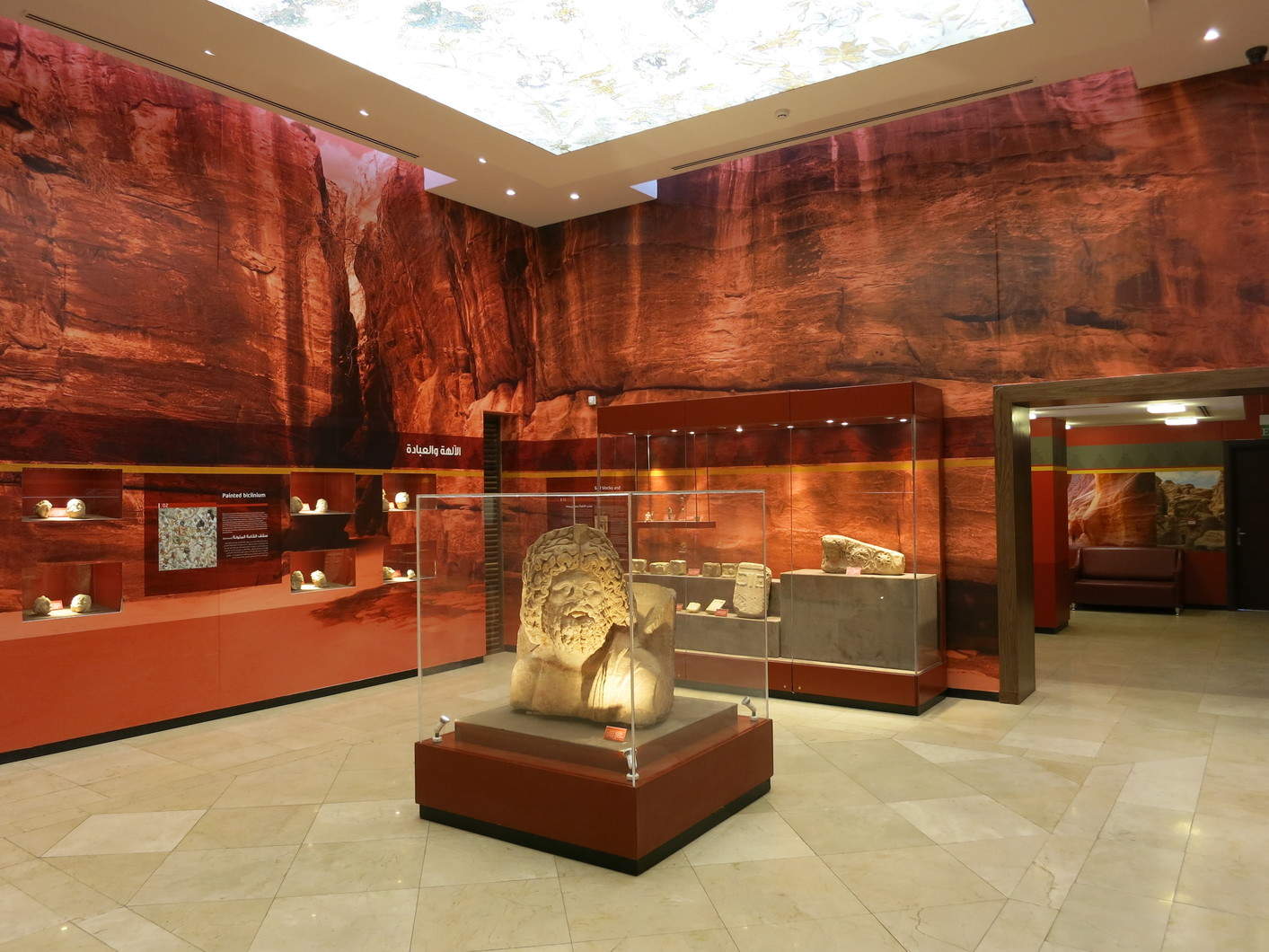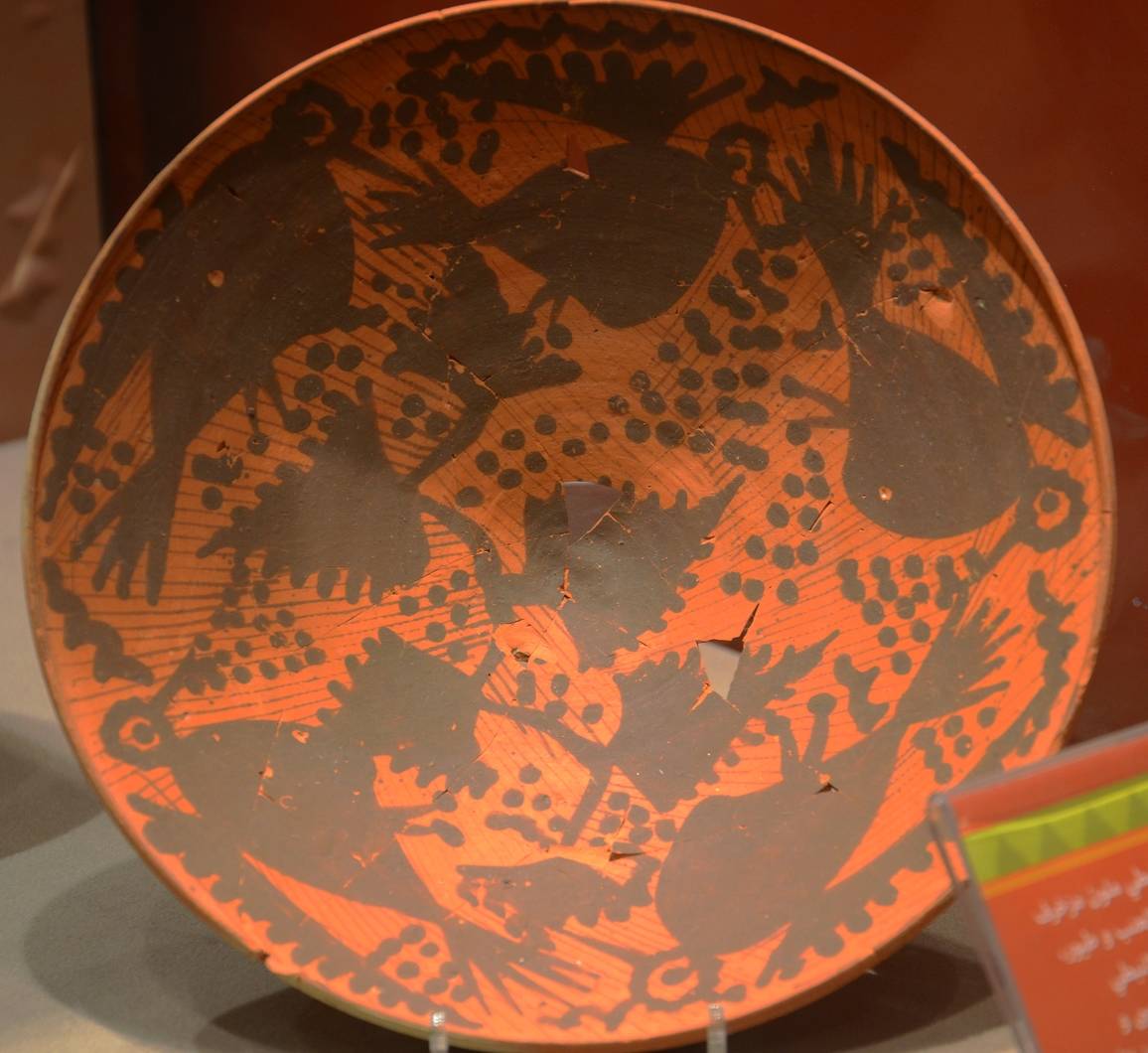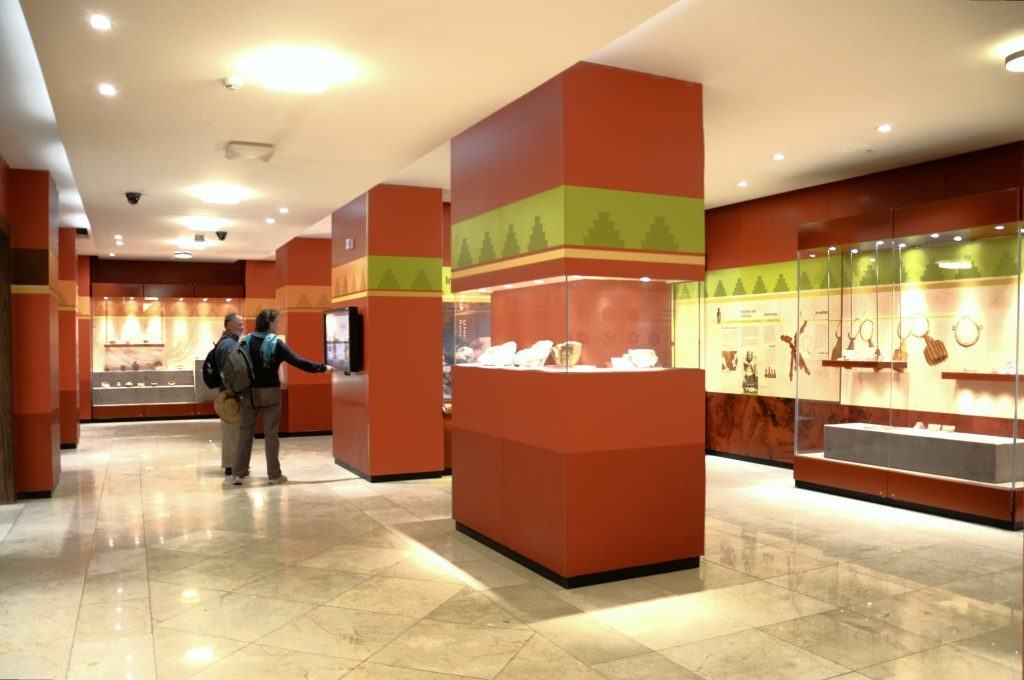
It’s easy to be awed by Petra’s spectacular monuments, by the immense and elaborate buildings carved from the variegated sandstone. It’s easy to feel dwarfed while marveling at the immensity of the towering monuments all around. It’s equally easy, however, to leave having only experienced Petra by viewing its archaeological treasures, and for the Petra Archaeological Park, that isn’t enough.
“We don’t want people to come and visit as they would an archaeological site,” said Dr. Emad Hijazeen, Commissioner of the Petra Archaeological Park. “We need to make people aware of all of the park’s assets—natural, cultural, or heritage. Come to Petra, experience Jordan. This is our slogan.”
This was the idea behind the exhibition now open to tourists at the new Petra Visitors’ Center, inaugurated by His Majesty King Abdullah II in October 2014. Four brightly painted rooms showcase a selection of artifacts found in the area, with panels of information about the landscape, changes in the Petra region from prehistory to present, water management, and cultural practices in Petra. There are two interactive television screens that allow visitors to delve deeper into topics such as the contemporary lives of the region’s inhabitants and the blockbuster movies that have used Petra as a backdrop.
The mission behind creating the exhibition—to communicate the deep, complex history of this place and its importance beyond the (admittedly vast) archaeological remains—is an ambitious one. It is difficult to tempt tourists—who are either exhausted from their long uphill hike out through the Siq or eager to get on with seeing the iconic sights inside the park—indoors to see mute objects behind panes of glass. One visitor I spoke with affirmed this, noting that in the hour he spent in the exhibition, only one organized tour came through, and they only made it halfway through before leaving. Those who do take the time to read the labels and examine the objects on display, however, say that they’ve learned a great deal. Some were impressed by the high quality of artifacts, others appreciated the amount of detail presented in the exhibition. Many named specific things they enjoyed learning about, including gender relations, hydraulic engineering strategies, and religious practices in Nabataean Petra.

But perhaps visitor Susan Hawkesford’s reaction can be seen as the greatest indicator of the exhibition’s success in achieving its goals. Upon finishing her tour through all four rooms, she expressed that she was “surprised that there are not more artifacts from Petra, that so many came from other places.”
Most visitors, says Dr. Hijazeen, have no idea that the Petra Archaeological Park alone measures about 264 square kilometers. Even with two days allotted to visit the Park, it is nearly impossible to fully grasp how expansive it really is, how far one can walk from the core of the ancient city and still find Nabataean inscriptions, cisterns, and tombs, or how many generations of human beings from different civilizations have occupied this landscape. The exhibition must impress all of this upon the visitor in the space of only four rooms.
In order to accomplish this, artifacts from many periods and places in the area were carefully chosen by Dr. Suleiman Farajat, a Petra expert and archaeologist contracted for the USAID-funded project, together with architect and designer Zaid Masannat. The specific design, wherein each room is vividly painted its own bright shade and tackles a particular theme (rather than a specific chronological period) was conceived and executed through a collaboration between Masannat and Al-Bitar Consultants, an Amman-based engineering firm.

The museum’s four galleries bring together the objects, ideas, and art of an enormous diversity of past and present people. The way that so many physical fragments of history have been collected and contextualized succeeds in representing how multifaceted the notion of “Petra” is—how much space and time is encapsulated in that name, and how many different meanings are attached to it. The goal for the exhibition is accomplished every time a tourist like Rowena Lord notices, for example, that the ceramic pipe that is on display was found in what is today Wadi Musa, recognizing how land use and boundaries have shifted through time, or when visitor Debra Skea learns that the daughter of the Nabataean king Aretas IV was married to the son of Herod the Great, demonstrating unexpected linkages between ancient polities.
Walking through the Siq can be a transportive experience, evoking the same anticipation felt by traders passing through thousands of years ago as one continues down the almost tunnel-like canyon to the singular view of the gleaming Treasury. By contrast, the exhibition at the Petra Visitors’ Center provides digestible glimpses into a wide variety of aspects of life in this region, inviting visitors to reflect on connections and themes they would be unlikely to encounter anywhere else within the expansive Park. It is a completely different kind of engagement with Petra, and should not be missed.
Written by Allison Mickel.
Allison Mickel is a Ph.D. candidate in anthropology at Stanford University and also serves as anthropologist and ethnographer for ACOR’s Temple of the Winged Lions Cultural Resource Management (TWLCRM) Initiative in Petra. She was awarded a Fulbright fellowship for 2014–15 to pursue research related to host community perceptions of archaeology.

